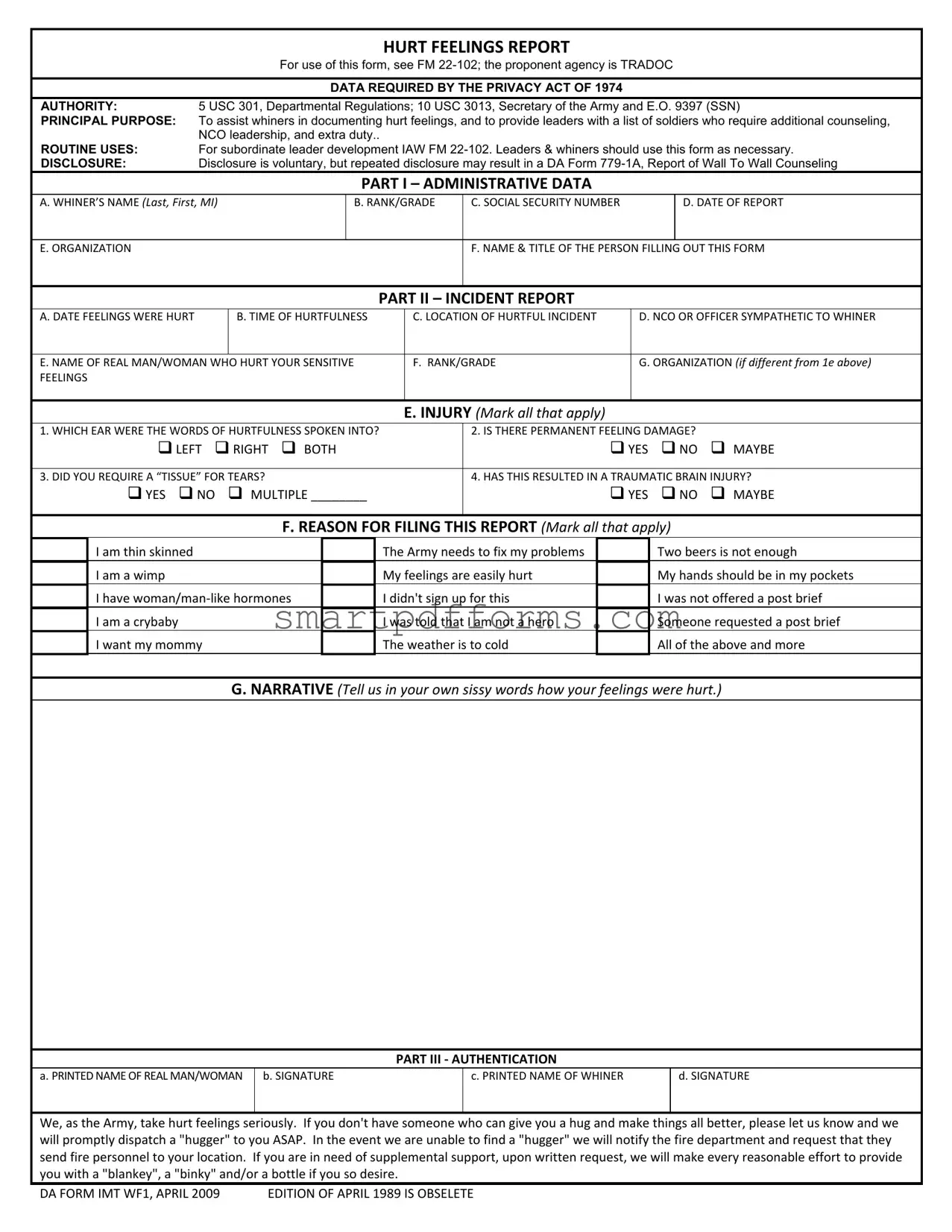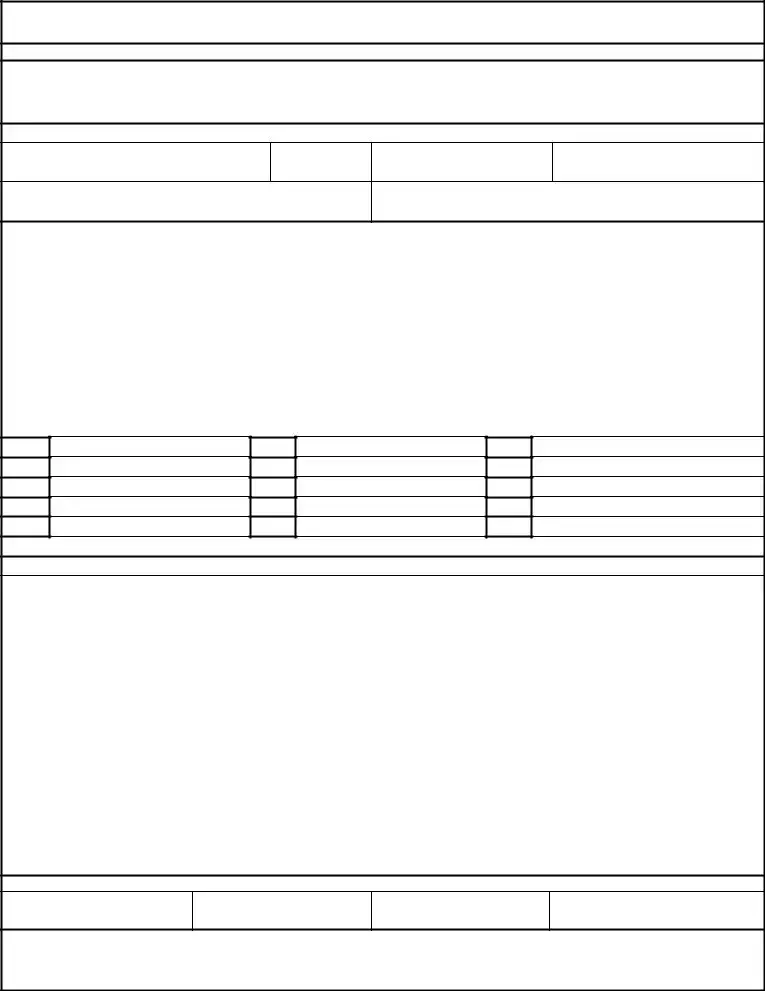In today’s fast-paced environment, understanding the intricacies of emotional well-being within structured organizations like the military has taken on new levels of importance. The Hurt Feelings Report form, albeit approached with a humorous undertone, addresses this aspect in a manner that stretches beyond the traditional bounds of formal documentation. This form, governed by directives such as FM 22-102 and rooted in legal frameworks like the Privacy Act of 1974, plays a dual role. Firstly, it serves as a tool for individuals, humorously termed ‘whiners’, to document instances where their feelings were hurt, offering an unusual yet insightful glimpse into the emotional dynamics within the Army. The form meticulously records administrative data and the specifics of the incident, from the date and location of the hurtful event to the identification of the supposed offender, humorously referred to as the 'real man/woman' responsible. Additionally, it boldly ventures into areas of emotional injury with checkboxes inquiring about the severity of the emotional impact, including whether "tissues" for tears were required, thus blending a mix of satire with the real need for emotional acknowledgment. The report, with its provision for narrative descriptions, offers a space for soldiers to voice their emotions, albeit in a tongue-in-cheek manner, and ends with a humorous offer of dispatching a 'hugger' or providing comfort items like a 'blankey' or a 'binky'. The form, while seemingly whimsical, underscores a critical point – the recognition of emotional well-being within rigid hierarchical structures and the need for leadership to address such concerns, even if through a satirical lens. This approach raises intriguing questions about the balance between maintaining discipline and acknowledging the human need for understanding and emotional support within the military.

